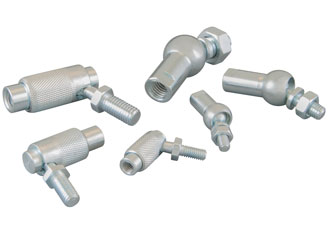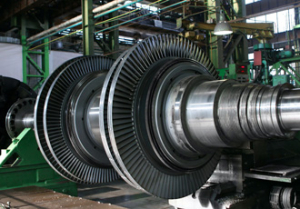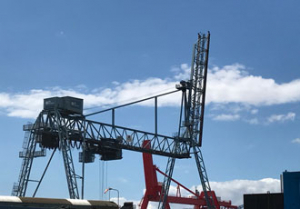Ball joints bring flexibility to all sorts of systems and structures

People use ball and socket joints every single day; they just don’t know it as it is in the form of their hips. They allow people to move in many ways - from gentle strolls to rigorous exercise. In engineering terms, axial ball or ball and socket joints rotate smoothly in all directions, so can absorb considerable amounts of misalignment of shafts and structural elements. As such they are invaluable in a wide variety of machines and engineered systems.
Ball joints are typically made of steel, but can be produced in virtually any metal, plastic or a combination of engineering materials. They come in a huge range of sizes and in many variations, but essentially consist of a bearing stud and socket enclosed in a casting. Their spherical shape gives them free movement or rotation in all directions, up to the physical limit set by the edge of the casting.
A variation on the basic axial ball joint is the quick release option. This finds many uses, including in applications where structures and mechanisms are frequently dismantled and reassembled. An example of this is in the modern marquees used as temporary accommodation at festivals, concerts, public events and private weddings.
WDS now offers a range of zinc plated steel ball joints. The axial joints are available in sizes from 8mm ball diameter (having an extraction force of 3.1kg and weighing 15g) to 16mm ball diameter joints (with an 8.2kg extraction force and weight of 104g). Similarly, the WDS quick release ball joints are offered in a range of sizes, from ball diameters of 6.4mm to 10.7mm, weighing from 17g to 78g, with spring release mechanism.
Phil Holyome, Business Development and Special Projects Engineer with WDS, offers an overview of these useful components and explains that his company’s range of ball joints is suitable for use in a very wide range of applications: “Typically they are used in automation projects, where you need to generate linear movement though an angle.
“It is fairly common in engineering that you want to design a say handle or lever into a machine or system for moving a slide or activating a locking pin. In some cases you will want the handle in a convenient and ergonomic position but there is no straight line access from there to the moving part. In such a case you can use a ball joint to provide a cranked push rod, the joint providing the variable angle required to create the necessary movement.”
WDS can also supply rubber boot type covers for its ball joints, which as Holyome explains act to keep dirt out and lubrication in. “A lot of ball joints are used in installations where they could be susceptible to occasional ingress of dust, dirt, grit or similar particles, which could work their way well into the joint and damage the bearings surface. Similarly, ball joints often need to be greased to facilitate easy movement between the ball and socket, but of course there is a tendency for this to work its way out over time.
“In both cases a cover will help ensure a long and reliable working life.”
Similar articles
More from WDS Component Parts Ltd
- Quick release pins now available with D-ring 8th October 2019
- Hydraulic shock absorbers make for smooth operation 18th September 2019
- Technical support eases difficulties during development 20th August 2019
- Easing difficulties during development of new motorbike trailer 15th July 2019

-(1)ed.jpg)










Write a comment
No comments